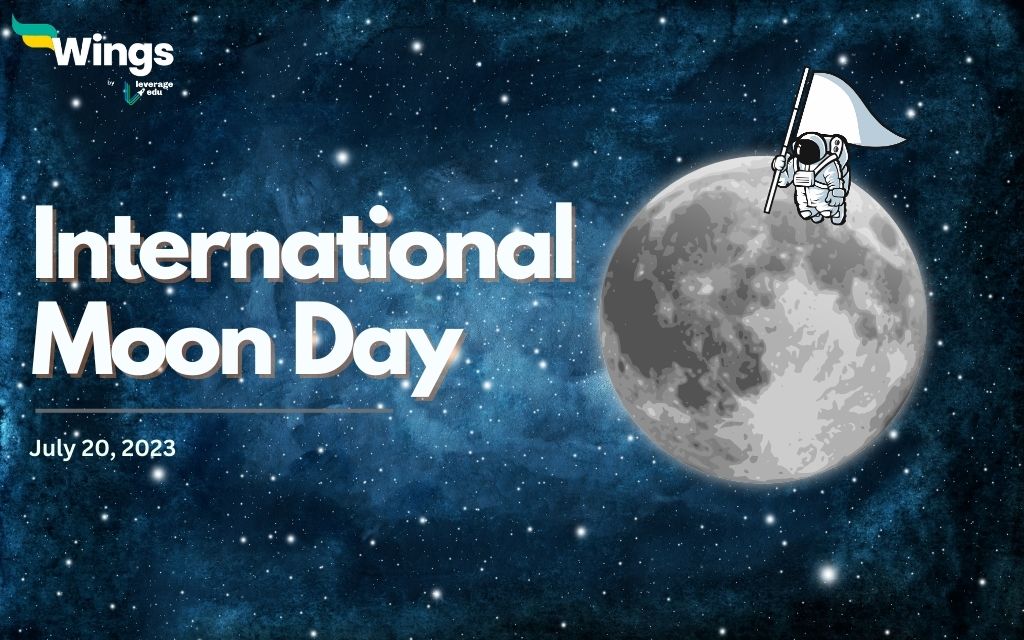Does the beauty of the moon fascinates you and makes you feel I wish I could go there and appreciate this beautiful creature as well? No matter how dark it is, the moon gives you hope that still there’s some light. To cherish this magnificent creature of God, International Moon Day is celebrated on the 20th of July every year.
Every year on July 20, the anniversary of the first human landing on the Moon as part of NASA’s Apollo 11 mission is commemorated. On July 20, 1969, astronauts Neil Armstrong and Buzz Aldrin landed on the Moon in a location they called Tranquilly Base.
UN’s General Assembly declared it as an international day to be observed in its resolution 76/76 on “International cooperation in the peaceful uses of outer space” in 2021. To know more about the international moon day, keep reading this blog.
Contents
Why International Moon Day?
Human civilizations have gazed up into the sky for thousands of years, pondering the origins and mysteries of the Moon, our sole natural satellite. The advent of the first telescopes enabled ground-based observations, which opened a new chapter in our understanding of our cosmic companion.
With the advent of space exploration, the Moon became the ultimate destination for innumerable missions, including crewed flights that left the first human footprints in space.
As ambitious plans for Moon exploration continue to take shape, this global celebration will serve not only as a remembrance of previous success but also as an annual testament to future ambitions.
Also Read: Career in NASA
Significance of International Moon Day
- In its resolution 76/76 on “International cooperation in the peaceful uses of outer space” in 2021, the General Assembly announced International Moon Day, a United Nations-designated international day to be honoured annually on July 20.
- International Moon Day commemorates the first human landing on the Moon as part of the Apollo 11 lunar mission.
- The celebrations will also take into account all countries’ achievements in Moon exploration and will promote public awareness of the importance of sustainable Moon exploration and use.
History
- On July 20, 1969, American astronauts Neil Armstrong and Edwin ‘Buzz’ Aldrin became the first humans in history to land on the Moon. The epic Apollo 11 mission took place eight years after President John F. Kennedy announced a national objective of sending a man to the moon by the end of the 1960s.
- When President John F. Kennedy addressed a special joint session of Congress in 1961, he stated, “I believe this nation should commit itself to achieving the goal, before this decade is out, of landing a man on the moon and returning him safely to Earth.”
- At the time of Kennedy’s proposal, the United States was still competing with the Soviet Union in space exploration advances, and the plan was applauded because it came during the Cold War. The National Aeronautics and Space Administration, NASA, launched the first unmanned Apollo mission after five years of hard labour by its worldwide team of engineers and scientists. The first mission was used to test the structural integrity of the launch spacecraft vehicle.
- On July 16, 1969, at 9:32 a.m., the entire world witnessed Apollo 11 take off from Kennedy Space Centre with three astronauts on board. The mission’s commander was Neil Armstrong. On July 19, the spacecraft entered lunar orbit after three days. The next day, Armstrong and Aldrin disconnected the lunar module, Eagle, from the main command module. When Eagle touched down on the lunar surface, Armstrong radioed to Mission Control in Houston, Texas, saying, “The Eagle has landed.”
- Armstrong departed the lunar module and down its ladder at 10:39 p.m. A television camera attached to the module was recording his movements and sending signals back to Earth, where the entire world was watching with bated breath.
- Armstrong stepped onto the moon’s powdery surface at 10:56 p.m. and said, “That’s one small step for man, one giant leap for mankind.”
Also Read: How to become an astronaut?
International Moon Day Theme 2023
Every year, International Moon Day is themed to highlight a different area of lunar exploration. “Lunar Exploration Coordination & Sustainability” is the theme for this year. This emphasis underlines the significance of coordinated efforts in space exploration as well as the importance of sustainable practices in these undertakings.
Also Read: Time Taken by Chandrayaan-3 to Reach the Moon
Interesting Facts About the Moon
- The Moon is the second densest satellite.
- The Moon always shows Earth the same face.
- The Moon is Earth’s only permanent natural satellite.
- The Moon’s surface is actually dark.
- The Sun and the Moon are not the same size.
- The Moon was made when a rock smashed into Earth.
- The Moon is drifting away from the Earth.
- The Moon makes the Earth move as well as the tides.
- There is water on the Moon!
- The Moon has quakes too
FAQs
On this day in 1969, NASA’s Apollo 11 mission, led by astronauts Neil Armstrong and Buzz Aldrin, safely landed on the Moon, a moment that will live in infamy. Recognising this historic achievement, the United Nations General Assembly established July 20th, 2021 as International Moon Day.
International Moon Day is celebrated on July 20 every year.
The phrase lunar day can also refer to the time interval between moonrises and high moons in a certain location on Earth. Because the Moon orbits the Earth in the same direction as the Earth’s axial spin, this time is normally 50 minutes longer than a 24-hour Earth day.
This was all about International Moon Day. Follow Leverage Edu for more interesting content on trending events and study abroad.
 One app for all your study abroad needs
One app for all your study abroad needs














